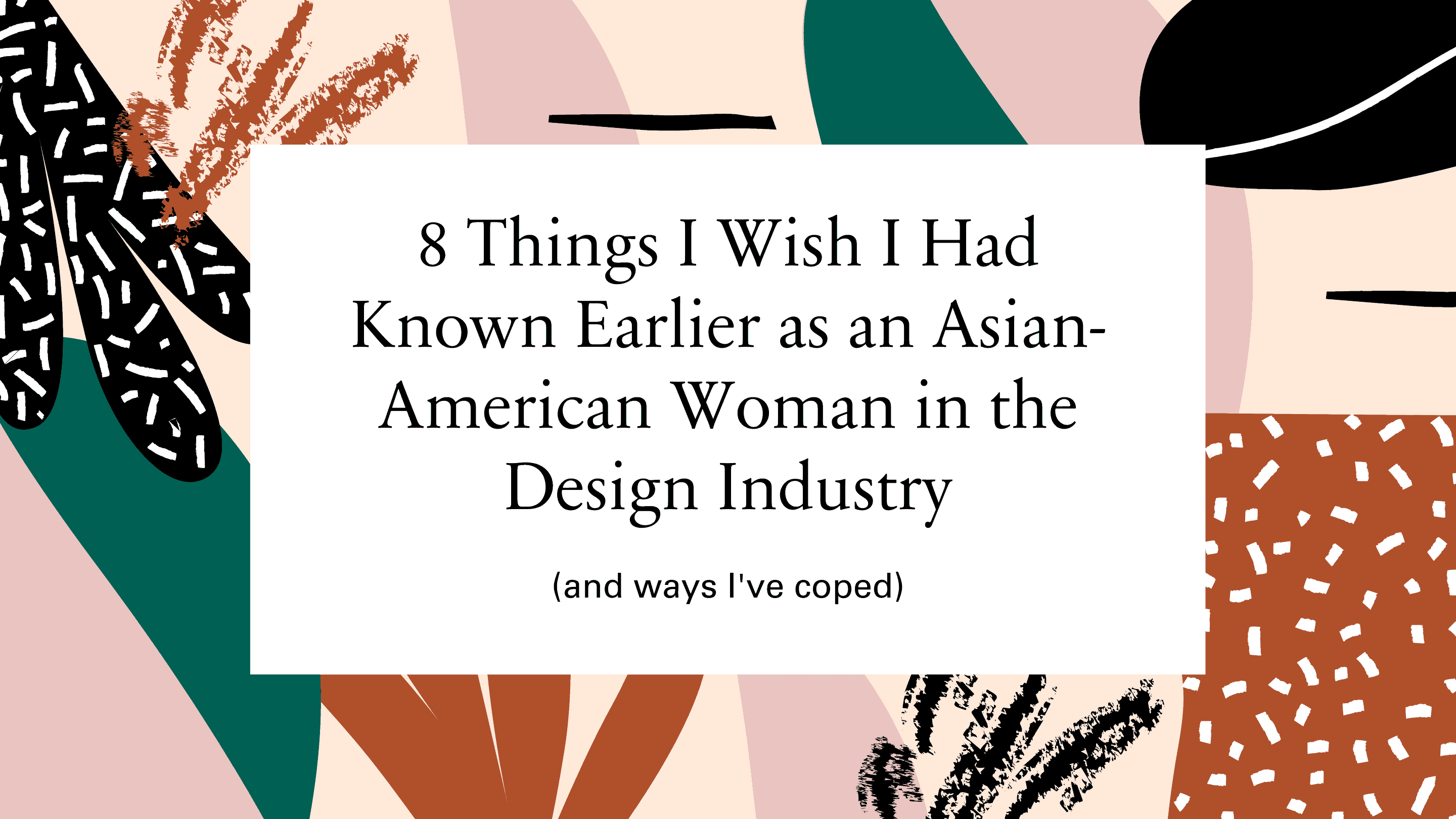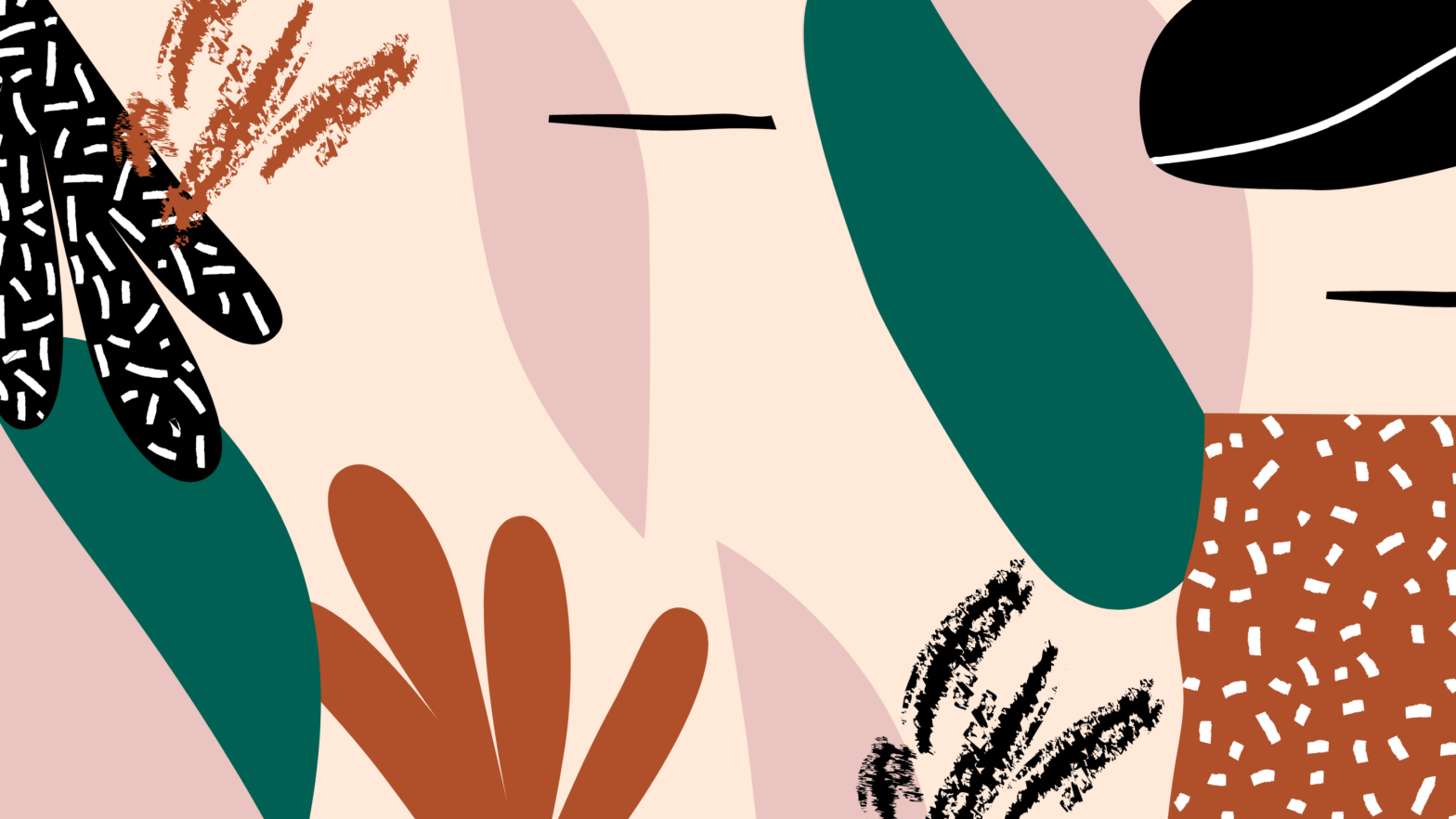Hey there, anonymous internet person! I’m assuming you’re here because something about this topic has caught your eye, whether it’s because you too are one of the few, the proud, the ornery AAPI designers in this industry, or you’re someone who is looking to be a better ally to your POC colleagues.
As I thought about what I wish I had known earlier in my career, I attempted to specifically center my analysis in design. I’m sure you’ll recognize these patterns from just…daily life as well. I know, it’s a shock to us all that work is real life, but here we are.

1. Yup, there are micro-aggressions and other weirdnesses.
The human capacity for forgetfulness is tremendous, and I think it’s natural to feel that when you’re a “professional,” you’ll be treated in a way that’ll be normative/acceptable for most professionals. So it’s definitely a shock the first time someone says, “Your English is so good! Where did you learn it?” Or “No, like, where are you really from?”
I’ve found I need to practice how I’d LIKE to react to these interactions. It’s a good way to keep myself from feeling so surprised when it happens – whether it’s a client, a colleague, or someone at a networking event. I don’t do it perfectly every time, but I do find it important to gently and politely nudge the person to think about what they just said, so my rote responses for the above situations are:
- “Is there a reason my English shouldn’t be good?”
- “Do you mean my ethnic background, or do you mean where I was born?”
Clarity is important.
2. Don’t bother being “model.”
The term “model” is pretty loaded when it comes to people of AAPI descent, and it can feel even worse in an industry filled with ambitious people who really, really, really want to be perfect. I definitely felt that pressure early on, especially with impostor syndrome always peeking around the corner. It’s easy to find ways to torture yourself early in your career if you feel like you’re not surpassing your peers or hitting professional milestones early enough…whatever.
So let’s go ahead and verbalize what I’m trying to say here: Screw. That.
“Model” is a hammer – a definition that’s forced upon you so that you feel what – ashamed when you don’t fit or don’t comply with an image you didn’t choose? ::side-eye::
We choose the road of design to match problems to beautiful solutions. And while what generally gets me over the hump of decision-making is sheer frustration, there are probably healthier ways to align your path with what you value. Just make sure it’s your choice and not your obligation that’s guiding you.
3. Seek out those who look like you.
I didn’t think about this very much when I was making the choice to come into the industry – I was mostly focused on how much I loved design. So, it was a little bit of a surprise once I got settled to look around and be like…wait a second.
In addition, when you’re looking for guidance and mentorship, it can feel harder to explain what you’re going through if the person on the other end hasn’t had similar experiences.
What I’d recommend is broadening your view; you can join organizations like AIA and NOMA, but keep in mind that if this is something important to you, finding diverse mentors outside of our particular little fiefdoms or even our industry will also help you. Your community is bigger than design.
4. I needed to be ready to make myself heard.
This is the flip side of that coin: if you’re not seeing yourself in the people around you, there are plenty of other designers who aren’t either. Weird, right? So there are two things here: one, being ready to speak up for your perspective when the opportunity presents itself; and two, getting involved in ways where you can help create increased AAPI presence and representation, e.g. industry organizations and affinity groups, becoming a mentor and guide, and getting comfortable talking about the ways your experience and background led you to design.
I did a spit-take the first time someone asked me to talk about how I came into design because I never expected someone to care how I got here. But it’s not about me – it’s solidarity and shared experiences, and it helps other people work through where they came from and where they’re going.
5. Helping others become more visible is important.
Being at the ready to elevate other AAPI voices is the master’s curriculum. When you’re feeling overlooked, you might want to be like…“HEY, LOOK AT ME. I AM A PERSON.” But there’s strength in numbers, and so it really helps to think of it as “HEY. LOOK AT US. WE ARE PEOPLE.”
In practice, I’ve learned that there’s a lot of ground to cover here. It can mean being the one to make sure others get credit where it’s due. It can mean telling people about your favorite AAPI designers and architects. It can mean correcting people’s pronunciation of your’s and others’ names and helping them appropriately understand other cultural reference points. Get awkward for the greater good.
6. Be an ally in design.
AAPI communities have historically sat in-between – marginalized, on the one hand, used as leverage against other communities of color, on the other, intersecting with immigrant issues, and then there’s the stickiness of that “model” term I mentioned earlier.
I knew this intellectually when I came into design, but it took longer to emotionally prepare myself to act, or even figure out where I wanted to focus my effort because there are a lot of options; internal? External? Design? Process? Something else? It’s worthwhile to examine what issues you care about early in your career, and determine which ones matter most to you. You will need to say no to some stuff to say yes. Everything has a cost.
Just keep in mind: the same skillsets and processes you use to design a space can be applied to structural and hierarchical issues as well. I came into architecture to solve big problems, and space is only one of them.
7. It’s a long-term struggle, and it’s okay to be upset about it.
The problems we face as working designers are in and of themselves design challenges. Add in being one of a few people of color at any given design organization, and sometimes it can feel a little much. You can feel a lot of pressure to quickly provide a solution and simplify the answers into something tidy. Nope. Constant iteration with lots of incremental steps. INCREDIBLY frustrating.
And originally, every time I felt like that, I’d undercut myself. “Oh, you’re doing the fun stuff of design. It’s not so bad. At least you’re working in a field you care about. Stop being so emo.”
No, no, no. You can have those feels; you’re not obliged to be a ray of sunshine at all times. Just don’t be a jerk, and you’ll get through it. There are people you know who have been through the same challenges. Lean on them a little while you get through it, and…
8. Give yourself some boundaries. Seriously.
Finally, you can’t do it all alone, and you shouldn’t expect to. You’re not the sole voice for AAPI designers in your organization, and the success of diversity and equity programs does not hinge upon YOU. You’ll have to figure out how you’ll walk the fine line of working hard for the cause, but also knowing that it’s a shared responsibility and not tormenting yourself because it’s not moving the way it should. Say no sometimes, have a beer and some nachos, AND TAKE A BREATH.
I know, I know – completely ALIEN idea because design is YOUR LIFE AND THERE ARE SO MANY THINGS TO FIX, right? Absolutely true. But you still need to take care of yourself. I don’t know who needs to hear this, but work is not the sum total of your life.

